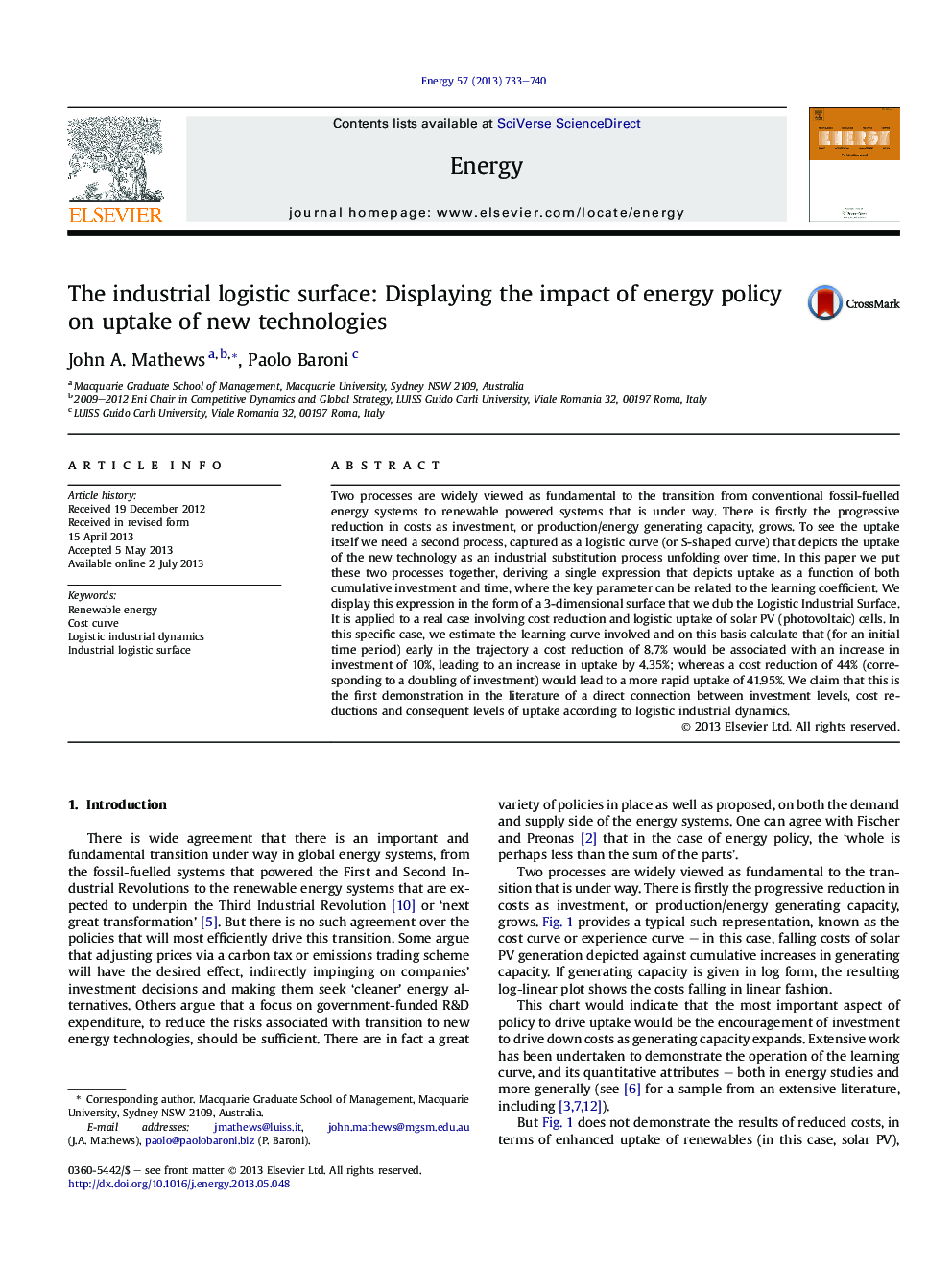| Article ID | Journal | Published Year | Pages | File Type |
|---|---|---|---|---|
| 1733116 | Energy | 2013 | 8 Pages |
Abstract
Two processes are widely viewed as fundamental to the transition from conventional fossil-fuelled energy systems to renewable powered systems that is under way. There is firstly the progressive reduction in costs as investment, or production/energy generating capacity, grows. To see the uptake itself we need a second process, captured as a logistic curve (or S-shaped curve) that depicts the uptake of the new technology as an industrial substitution process unfolding over time. In this paper we put these two processes together, deriving a single expression that depicts uptake as a function of both cumulative investment and time, where the key parameter can be related to the learning coefficient. We display this expression in the form of a 3-dimensional surface that we dub the Logistic Industrial Surface. It is applied to a real case involving cost reduction and logistic uptake of solar PV (photovoltaic) cells. In this specific case, we estimate the learning curve involved and on this basis calculate that (for an initial time period) early in the trajectory a cost reduction of 8.7% would be associated with an increase in investment of 10%, leading to an increase in uptake by 4.35%; whereas a cost reduction of 44% (corresponding to a doubling of investment) would lead to a more rapid uptake of 41.95%. We claim that this is the first demonstration in the literature of a direct connection between investment levels, cost reductions and consequent levels of uptake according to logistic industrial dynamics.
Keywords
Related Topics
Physical Sciences and Engineering
Energy
Energy (General)
Authors
John A. Mathews, Paolo Baroni,
